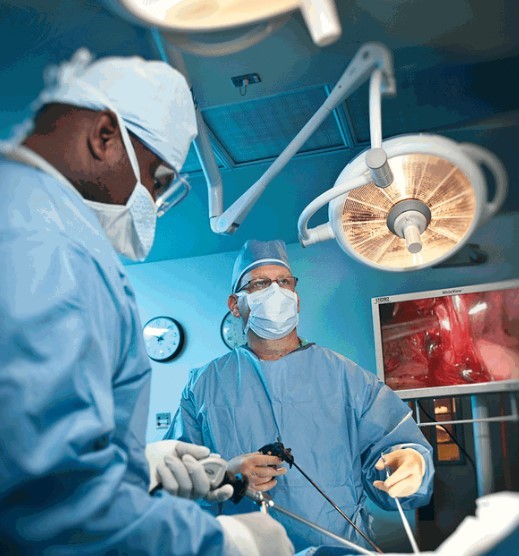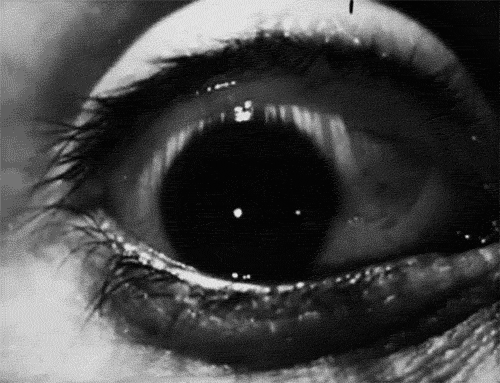#surgical procedure
Text


a surgical procedure for hemorrhoids
in a medical miscellany, netherlands or england, late 12th c.
source: London, BL, Harley 1585, fol. 9r
#guys--#12th century#hemmorrhoids#medieval medicine#surgical procedure#blood#nudity#illuminated manuscript#medieval art
292 notes
·
View notes
Note
If you can see hysterectomy not extreme, then you can see orchidectomy isn't either.
no hon.
i'm gonna correct you straight off the bat on this because number one, i NEVER said a hysterectomy 'wasn't extreme'.
and number two, getting a hysterectomy is VERY extreme and should absolutely not be taken lightly in any form. it is a highly invasive and sometimes *dangerous* surgery.
whether it is used to treat severe endo or for dysphoria/transition, *anything* that cuts your gut wide open and takes pieces of you out can be both *life threatening* and extreme. this would be why recovery is monitored so heavily after the fact and so goddamn important.
christ, CHILD BIRTH and even pregnancy or fucking miscarriage are extreme and can ALSO be life threatening, EVEN with modern medicine (and this should be especially obvious if you live in the u.s. right now)! so this statement was HORRIBLY misguided and ill informed.
people should absolutely have access to and autonomy for these surgeries should they want or need them, but don't you dare go spreading misinformation about that shit or trying to downplay it. cutting someone open in any regard for any reason to permanently alter their body is extreme. even if they NEED it. so is amputating a limb!
and you know what else is fucking extreme?
*CIRCUMCISION*!
and look, you seem youngish?? and i don't want to antagonize you but this shit right here made me mad and i'm gonna be purely up front with you, even if *you* want an orchiectomy or are trans or whatever and these 'don't seem like that big a deal' to you, they are a HUGE deal for many other people including doctors and especially those that bother to be well informed on these topics.
you need to *not* project onto others or try to invalidate their experiences/opinions.
there are people with severe endo or cancer who *want* kids, but *can't* have them and end up getting this surgery and it ends up being one of the most painful fucking experiences of their lives. the same goes for someone who might need an orchiectomy for whatever reason, yes and including trans people.
and their experiences of *actually* going through that instead of just fantasizing about or romanticizing it matter and should be taken into consideration.
this isn't a game or joke. don't you dare treat it like one.
#ask#psa#surgical procedure#do not take this lightly#absolutely not#i'm not playing#what the fuck#surgery
9 notes
·
View notes
Text
Guide on Pterygium Surgery by Dr. Surbhi Kapadia

Explore a comprehensive guide on Pterygium Surgery by Dr. Surbhi Kapadia, a renowned eye care specialist in Vadodara. Gain valuable insights into the surgical procedure, recovery process, and expert tips for optimal eye health. Trust in Dr. Kapadia's expertise for advanced and personalized care in treating Pterygium, ensuring the best outcomes for your vision.
#Pterygium#Pterygium surgery#best pterygium treatment#Surfer's Eye#Vision impairment#Conjunctiva#Surgical procedure#Local anesthesia#Conjunctival autograft
0 notes
Text
Understanding Hair Transplant From Experts
A hair transplant is a surgical procedure that moves hair follicles from a part of the body called the donor site to a bald or balding part of the body known as the recipient site. It is primarily used to treat male pattern baldness. Hair follicles are taken from the back of the head. The scalp on the back of the head is resistant to DHT and therefore DHT cannot cause hair loss in this area. The follicles are then placed into tiny incisions made in the balding area. The transplanted follicles will begin to grow hair within 4-6 months after surgery.
0 notes
Text
What Is Considered In A Surgical Procedure?
Surgery is a complicated medical operation that needs to be carefully planned. Such includes accuracy and a thorough comprehension of the patient's condition and the procedure that must be carried out, whether it's a necessary heart transplant or a standard appendectomy. When planning and carrying out surgical procedure, surgeons and other medical professionals consider several important criteria. Read more: https://www.biztobiz.org/articles/what-is-considered-in-a-surgical-procedure

1 note
·
View note
Text

"CAUSED GIRL'S DEATH PRISON FOR 4 YEARS," Toronto Star. January 22, 1943. Page 2.
----
Penitentiary Term Imposed Woman Who Admitted Her Guilt
----
Mrs. Helen Gorton (alias Rose), who on Monday last pleaded guilty to a charge of manslaughter of Anne Bolton, was sentenced by Mr. Justice Hope to four years in the penitentiary.
Anne Bolton died on Oct, 27, 1942, while at the home of accused and during the illegal operation which Mrs. Gorton admitted.
In passing sentence. Mr. Justice Hope recalled that it was not accused's first offence.
"You had the opportunity of contemplating the error of your ways when some six or seven years ago you were given consideration just as you were entering upon engaging in the same practices, which you have admitted in this case. It is not an easy matter for a judge in such a case, to render justice to the public and at the same time consider all the representations made in your behalf and to the circumstances of the case and the seriousness of the crime."
According to evidence, accused, in a panic. fled from the room in which Anne Bolton's death occurred, but gave herself up and made complete confession the following day, Oct. 28, 1942.
[AL: Gorton does not seem to have gone to the penitentiary. She appealed her sentence and had it reduced to a two year term.]
#toronto#manslaughter#illegal operation#abortion#illegal abortion#repeat offender#death during surgery#surgical procedure#history of reproductive rights#history of birth control#birth control#sentenced to prison#woman in the toils#women prisoners#prison for women#canada during world war 2#crime and punishment in canada#history of crime and punishment in canada
0 notes
Text
Reversing Gravity: The Latest News on Surgical Breast Lifts
Discover the latest news on the rising trend of surgical breast lifts, considered an effective solution for sagging breasts. Learn about the different procedures, risks, and ideal candidates. Stay updated with the headline horizon.
1 note
·
View note
Text
Blood Thinners and Hair Transplants: Effects and Management
Introduction:Blood thinning medications, also known as anticoagulants, are commonly prescribed for various medical conditions. However, individuals who are considering hair transplant surgery need to be aware of how these medications can impact the procedure and what measures should be taken to manage them effectively. In this article, we will explore the effects of blood thinners on hair…
View On WordPress
#Anticoagulants#Bleeding Risk#Blood Thinners#Hair Restoration#Hair Transplant#Healthcare Consultation#Medical Conditions#Post Operative Care.#Surgery Preparation#Surgical Procedure
0 notes
Text
Urethral Reconstruction Procedure in Hyderabad - Best Urological Care at TX Hospitals
Get the best urethral reconstruction procedure in Hyderabad at TX Hospitals. Our experienced surgeons provide top urological care using advanced surgical techniques to repair damaged or obstructed urethras
0 notes
Text
Lateral Canthotomy: A Critical Procedure for Acute Visual Loss
Lateral canthotomy is a surgical procedure performed to alleviate acute, potentially irreversible visual loss secondary to increased intraocular pressure from orbital compartment syndrome. This condition can arise from a variety of causes, including traumatic injury, infection, or bleeding, and requires prompt intervention to prevent permanent vision loss. In this article, we will explore the indications, technique, risks, and benefits of lateral canthotomy in the emergent setting.
Indications for Lateral Canthotomy
Orbital compartment syndrome is a potentially devastating condition that arises from increased intraocular pressure in the eye, leading to compromised blood flow to the optic nerve and retina. The resulting ischemia can cause irreversible vision loss if left untreated. Lateral canthotomy is a critical procedure that can decompress the orbit and alleviate the increased intraocular pressure, restoring blood flow and preventing further damage to the optic nerve and retina.

The signs and symptoms of orbital compartment syndrome can vary but may include severe eye pain, decreased vision, proptosis (bulging eye), chemosis (swelling of the conjunctiva), and resistance to eye movement. These findings are concerning and should prompt immediate evaluation by a trained medical professional.
Technique of Lateral Canthotomy
Lateral canthotomy is a relatively simple procedure that can be performed in the emergent setting by trained medical professionals, including emergency physicians and ophthalmologists. Proper technique is crucial to maximize safety and minimize risks, including bleeding, infection, and injury to the eye or adjacent structures.
The procedure involves a series of steps, beginning with proper sedation and pain management to ensure patient comfort during the operation. Sterile technique should be followed, including cleaning the skin with chlorhexidine and sterile draping of the surgical field.
Local anesthetic is infiltrated from the lateral canthus to the orbital rim to provide proper nerve blockage and minimize patient discomfort. Eye irrigation with saline solution is carried out to clear any debris or blood, while a straight mosquito hemostat is placed along the lateral canthus and applied for one minute to minimize bleeding. This provides a clear surgical field and reduces the risk of hemorrhage.
Once the hemostat is removed, a straight iris scissors is used to incise all layers of tissue along the same path, creating a flap of tissue that is lifted to expose the lateral canthus. Using forceps, the lower eyelid is grasped and retracted to reveal the lateral canthal tendon, located inferior and posterior to the lateral canthal fold. The tendon is then severed completely through the middle of the lateral canthal ligament with the iris scissors, effectively decompressing the orbital compartment and reducing intraocular pressure.

Risks and Benefits of Lateral Canthotomy
While lateral canthotomy is generally considered safe, there are potential risks and complications to consider. These may include bleeding, infection, injury to the eye or adjacent structures, and adverse reactions to anesthesia or pain medication. Careful monitoring of the patient's post-procedural course is essential, with close observation for any signs of bleeding, infection, or ocular complications. Follow-up care, including ophthalmologic evaluation, is also important to ensure adequate healing and restoration of vision.
The benefits of lateral canthotomy, however, far outweigh the risks in the emergent setting. This procedure is critical for the prevention of irreversible vision loss, and prompt intervention can lead to excellent outcomes and preservation of visual function.
Conclusion
Lateral canthotomy is a critical procedure that can alleviate acute visual loss and prevent permanent damage to the optic nerve and retina. As an emergent procedure, it requires careful consideration of the patient's medical history, co-morbidities, and potential risks and benefits.
#emergency medicine#acute care#emergency#health & fitness#biology#emergency physician#foamed#fitblr#lateral canthotomy#acute vision loss#intraocular pressure#orbital compartment syndrome#ophthalmology#surgical procedure#eye surgery#eye trauma#eye injury#eye emergency#vision loss
0 notes
Text
Under local anesthesia, you should not feel any pain during a surgical procedure, but you may still feel pressure, touch, or movement. Local anesthesia works by numbing the area around the surgery site, but it does not affect your ability to feel pressure or touch.
The extent to which you can feel touch under local anesthesia can vary depending on the specific type of anesthesia used, the location of the surgery, and individual factors such as pain tolerance. In some cases, you may feel pressure or movement during the procedure, but this should not be uncomfortable or painful.
0 notes
Text
Comprehensive Guide to Pterygium Surgery by Dr. Surbhi Kapadia
Pterygium surgery is a proven solution for treating the vision-impairing condition known as 'Surfer's Eye.' Dr. Surbhi Kapadia, an esteemed eye surgeon in Vadodara, offers a comprehensive guide to understanding this surgical procedure.

Pterygium Surgery – The What, How, and Why
Pterygium surgery is a procedure aimed at removing the abnormal growth on the conjunctiva to restore and preserve vision. The surgery is typically recommended when pterygium causes significant discomfort or threatens to impair vision.
The Steps Involved in Pterygium Surgery
The procedure involves several critical steps. Firstly, the patient receives local anaesthesia to ensure comfort. The pterygium is then carefully removed. To reduce the risk of recurrence, Dr. Kapadia performs a conjunctival autograft, transplanting a small section of the patient's conjunctiva to the affected area.
Aftercare and Recovery Post-Pterygium Surgery
Post-operative care is crucial for successful recovery. Patients are advised to wear protective sunglasses and avoid environmental irritants like dust and wind. Prescribed medications, such as anti-inflammatory and antibiotic eye drops, are essential for preventing infection and aiding the healing process.
Choosing the Right Surgeon for Pterygium Surgery
The success of pterygium surgery greatly depends on the surgeon's skill and experience. Dr. Surbhi Kapadia is renowned for her expertise in pterygium surgery, offering patients in Vadodara the best possible outcomes through state-of-the-art surgical techniques and personalized care.
Conclusion:
Pterygium surgery, when performed by an expert like Dr. Kapadia, can effectively treat the condition, ensuring optimal eye health and vision quality. Her patient-centered approach and extensive experience make her a top choice for individuals seeking the best pterygium treatment.
Contact Information:
For more information or to schedule an appointment for pterygium surgery, contact Dr. Surbhi Kapadia at Aadicura Superspeciality Hospital, Vadodara.
#Pterygium#Pterygium surgery#best pterygium treatment#Surfer's Eye#Vision impairment#Conjunctiva#Surgical procedure#Local anesthesia#Conjunctival autograft#Recurrence prevention#Post-operative care
0 notes
Text
Laparoscopic Kidney Stone Removal Surgery By Dr. Mayur Dalvi
Kidney stones are a common urological problem affecting millions of people worldwide. While small stones can pass through the urinary tract without any intervention, larger stones may require surgical removal. One of the most effective and least invasive procedures for removing kidney stones is laparoscopic kidney stone removal surgery. In this Blog, we will discuss everything you need to know about laparoscopic kidney stone removal surgery with inputs from Dr. Mayur Dalvi, a leading urologist with extensive experience in this field.
What is Laparoscopic Kidney Stone Removal Surgery ?
The procedure of laparoscopic pyelolithotomy, also known as laparoscopic kidney stone removal surgery, is used to remove kidney stones that are too large to pass through the urinary tract. This procedure involves making small incisions in the abdomen and using a laparoscope to view and remove the stones from the kidney.
When is Laparoscopic Kidney Stone Removal Surgery Recommended ?
Laparoscopic kidney stone removal surgery is recommended for patients with larger kidney stones (more than 2 cm) that cannot be removed through non-surgical means, such as shock wave lithotripsy or ureteroscopy. This procedure is also recommended for patients with anatomical abnormalities or other conditions that make other surgical options risky.
How is Laparoscopic Kidney Stone Removal Surgery Performed ?
Laparoscopic kidney stone removal surgery is performed under general anesthesia. The procedure involves the following steps:
Making small incisions: The surgeon makes several small incisions (usually 3-4) in the abdomen, each measuring less than 1 cm.
Inserting the laparoscope: A laparoscope, a thin, flexible tube with a camera, is inserted through one of the incisions. The camera transmits images to a monitor, allowing the surgeon to view the kidney.
Removing the stone: The surgeon uses specialized instruments, such as graspers and scissors, to locate and remove the stone from the kidney remove larger stones, the surgeon may need to make an additional incision in some cases. Closing the incisions: Once the stone is removed, the surgeon closes the incisions with sutures or surgical glue.
What are the Advantages of Laparoscopic Kidney Stone Removal Surgery ?
Laparoscopic kidney stone removal surgery has several advantages over traditional open surgery, including:
Minimally invasive: This procedure involves making small incisions, which results in less pain, scarring, and a shorter recovery time.
Shorter hospital stays: Most patients are able to leave the hospital within 1-2 days after the procedure.
Reduced risk of complications: The risk of complications, such as bleeding, infection, and injury to surrounding organs, is lower with laparoscopic surgery compared to open surgery.
Higher success rates: Laparoscopic kidney stone removal surgery has a higher success rate than non-surgical treatments for larger kidney stones.
What is the Recovery Process Like After Laparoscopic Kidney Stone Removal Surgery?
The recovery process after laparoscopic kidney stone removal surgery varies depending on the patient's overall health and the size of the kidney stone removed. Most patients can expect to resume normal activities within 2-3 weeks after the procedure. However, strenuous activities and heavy lifting should be avoided for at least 2-3 weeks to allow the incisions to heal properly. Your surgeon may also prescribe pain medication and antibiotics to manage pain and prevent infection.
Summary
For patients with larger kidney stones that cannot be removed non-surgically, laparoscopic kidney stone removal surgery is a safe and effective option. Dr. Mayur Dalvi, a renowned urologist with extensive experience in laparoscopic kidney stone removal surgery, is a recommended doctor for patients seeking this operation
#laparoscopic kidney stone removal surgery#kidney stones#urology#minimally invasive surgery#surgical procedure#laparoscopy#pyelolithotomy#non-surgical treatment#open surgery#recovery process#Dr. Mayur Dalvi
0 notes
Text
What happens before, during and after Cesarean delivery?
Cesarean delivery is a surgery procedure used to deliver a baby when a vaginal delivery can't be done safely. A c-section can be planned ahead of time or performed in an emergency.
Cesarean delivery is a surgery procedure used to deliver a baby when a vaginal delivery can’t be done safely. A c-section can be planned ahead of time or performed in an emergency. It carries more risk than a vaginal delivery, with a slightly longer recovery period.
Preparation
Preparing for a C-section or cesarean delivery, a health care provider might suggest talking with an anesthesiologist…

View On WordPress
0 notes
Text
In my mind bottom surgery is such an impossibility because of how much it costs in America if you don’t have insurance that covers it so I don’t really think of it as a real thing most of the time. So when a trans woman I follow or am mutuals with mentions having a pussy my reaction is always something like “woah I forgot that was a thing real people can just get”
#for the record I don’t think I even want it#i literally don’t consider it an option. not just bc of cost but bc I’m suuuuuper squeamish about surgery stuff#I can’t even read a basic description of a surgical procedure without getting uncomfortable
84 notes
·
View notes
Text
you actually GOTTA give characters with top surgery scars some gnarly looking scars they should look like the person made it themselves they should swirl around like vines on their chest they should glow they should look insane and fun actually . give em character
#still mad about that one weird 'tutorial' a friend sent me who said to 'never stylise scars from surgical procedures'#literally shut the fuck up . let me draw characters with cool looking scars#let me stylise the shit out of something i have on my own body fuck off lmao youre so boring if you think this way#drawing a magical cartoon character you made up in your mind who has the most boring surgery diagram looking scars.#ok. but i will make them glow in the dark and shaped like ancient greek pottery decorations. eat my ass#BTW MY FRIEND SENT IT TO ME TO SHIT ON IT WITH ME NOT TO TELL ME WHAT TO DO I WANNA BE VERY CLEAR LMAO#om du läser detta; 🫶#corp.krax
162 notes
·
View notes